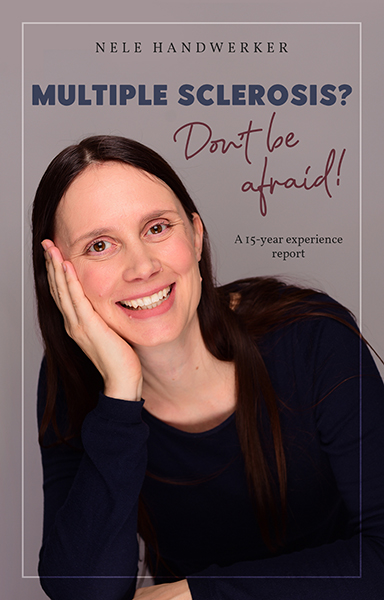In this episode, we continue with the symptoms of multiple sclerosis. This time, the focus is on vision problems. How is vision affected? What is important now? When do visual disturbances occur? And how can you prevent future vision problems?
Visual disturbances are a common symptom of MS, but can sometimes also be an indication of a disease from the neuromyelitis optica spectrum disorders (NMOSD).
Klicken Sie auf den unteren Button, um den Podcast zu laden.
Table of Contents
When do visual problems occur?
For one third of all MS patients, visual problems are the first symptom they notice of the disease themselves. This is followed by further examinations by an ophthalmologist and then a neurologist. Sometimes it also goes straight to the neurologist depending on how the general practicioner is educated about the possible causes of these symptoms and if other symptoms are part of the relapse as well.
However, visual disturbances can also occur later in the course of the disease or happen several times as a relapse. It is important to distinguish the disease from other neurological diseases in order to start the appropriate therapy.
For Neuromyelitis optica spectrum disorders (NMOSD) inflammation of the optic nerve is very common. A few years ago scientist discovered that they are seperated autoimmune diseases, but they are treated normally by MS specialist.
What are the different types of vision problems?
Optic neuritis is particularly typical. The myelin layer of the optic nerve is attacked. This leads to blurred vision, colors are perceived paler and often the movement of the eye hurts. You may also have spots on your field of vision where small pieces of the image are virtually missing. Usually only one eye is affected.
In NMOSD disorders, more often both eyes are affected at the same time. In addition, the extent of the inflammation is usually much more intense, which makes a rapid diagnosis and subsequent preventive therapy with disease-modifying drugs particularly important.
However, other cranial nerves that are related to vision may also be affected. As a result, you may not be able to control your eyes properly, and you may experience double vision or blurred vision.
Eye tremor, also known as nystagmus, is another possible symptom. This is when your eyes tremble or twitch uncontrollably. As an outcome, problems with the eyes and vision can also lead to balance problems.
In summary, these are all problems that are clearly felt in everyday life and that usually lead to having the vision disorder examined more closely.
How are visual problems treated?
In most cases, intravenous cortisone treatment is started very quickly because vision is a particularly important sense and doctors do not want to take any risks here. If that doesn’t work, a second cortisone shot can be given.
There is also the option of blood washing in the form of immunoadsorption or plasmapheresis. Since the intervention in the body is significantly greater with both forms of blood washing and requires not only special technology but also trained personnel, these therapies are rarely used.
What can you do during the relapse?
See a doctor quickly if you have new types of vision problems that last longer than 24 hours and stay as calm as possible. Relax as much as possible. Stress tends to fuel inflammatory activity. If you like to read, use audiobooks, podcasts or the radio to distract yourself and not constantly confront your vision problems. If you are uncomfortable with brightness, sunglasses can help. Eat healthy, drink plenty of fluids, and use low-impact sports or relaxation techniques. This will also help you cope better with the possible side effects of cortisone.
And what if visual impairments remain permanently?
Of course, it can also happen that certain impairments remain and you may no longer see so sharply and with so much contrast. In the acute phase, it is possible to follow up with another cortisone treatment or, if this does not help at all, to carry out a blood wash. This includes plasmapheresis and immunoadsorption. However, your treating physician knows best and can assess what makes sense under the given circumstances. As long as the optic nerve is still swollen, the impairment may appear greater than it is in the end. Therefore, give your body time to recover.
However, if the relapse has already subsided and you really have permanent visual disturbances, you must try to compensate for them and learn to deal with them. Physiotherapy and occupational therapy specialists can help you with this. In addition, nowadays there are more and more accessible offers on the Internet for digital use. From larger fonts and more contrast to offers for reading aloud.
However, please also keep in mind that you may not be so roadworthy anymore, and avoid endangering yourself and others.
What is the best prevention against vision problems?
A working disease-modifying therapy paired with a healthy lifestyle, loving people around you who do you good and as little harmful stress as possible.
Food for thought
If you had a visual disorder and it has now subsided, if possible without permanent restrictions, then enjoy nature in all its splendor and beauty all the more consciously. The bright colors in autumn. The stark contrast in winter, when white snow lies on dark tree trunks, and the sun shines in the blue sky. Or when the green bursts forth in spring and tries to conquer the world anew. And in summer, the splendor of flowers and delicious fruits ripen. The world is beautiful, enjoy it.
And if your sight is reduced, use your other senses. Hear the buzzing of bees and happy laughter of children playing with water. Taste the juicy strawberries and cherries. Hear the changes in autumn, when the leaves rustle, the wind suddenly whistles or there is complete silence. Breathe in the smell of mulled wine and baked apples in winter. And sniff your way through the splendor of flowers that spring brings forth in so many ways.
See you soon and try to make the best out of your life,
Nele
For more information and positive thoughts, subscribe to my newsletter for free.
Click here for an overview of all podcast episodes published so far.

And at many more places.
* This text contains affiliate links. This means that I get a small compensation if you buy the product recommended by me through the link. For you nothing changes in the price of the product. And it helps me to pay for the blog and to write new posts.










